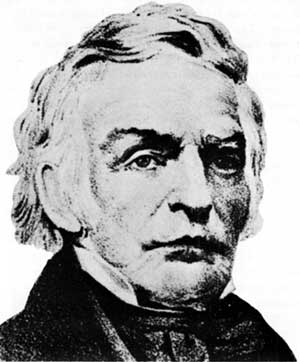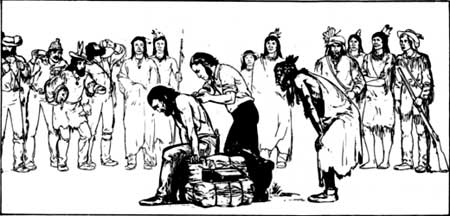|
WHITMAN MISSION National Historic Site |
 |
Samuel Parker and the American Board
Another man influenced by the Indians' call was the Reverend Samuel Parker, pastor of the Congregational Church in Middlefield, Mass. Though 54 years of age, married, and the father of three children, Parker volunteered to the American Board of Commissioners for Foreign Missions to go to the Flathead country. Turned down by the Board, Parker moved to Ithaca, N.Y. Early in 1834, he spoke at a special meeting in the Ithaca Presbyterian Church and aroused the congregation to such a high pitch that it was proposed that Parker go to Oregon to select mission sites. This time Parker was able to get the support of the American Board for the undertaking.

Samuel Parker.
WHITMAN COLLEGE
Knowing little more about the Pacific Northwest than its general direction, Parker set out in the spring of 1834; but he and two companions arrived at St. Louis too late to accompany the fur-traders' annual caravan to the Rockies. It was risky to undertake the trip alone, so Parker returned to New York to raise money and recruits for the next year. In December 1834 he reported to the American Board that a Dr. Marcus Whitman had volunteered to serve as a medical missionary.
|
"I have had an interview with the Rev. Samuel Parker upon the subject of Missions and have determined to offer myself to the A. M. Board to accompany him on his mission or beyond the Rocky Mountains." Marcus Whitman, |
In 1835 Parker and his new recruit, Marcus Whitman, joined the fur-traders' caravan and headed westward. Not until cholera had broken out and Dr. Whitman's medical skill had prevented disaster in the caravan did the unholy traders appreciate having the missionaries in their group. On August 12 the party reached the fur-trading rendezvous, which was held that year near the junction of Horse Creek and the Green River in Wyoming. There, once again Whitman was able to display his medical skill. He successfully removed a 3-inch iron arrowhead from the back of the famous mountain man, Jim Bridger, under the watchful eyes of traders, mountain men, and Indians. This exhibition of competence was not lost on the Nez Percé and Flathead. Parker and Whitman talked to them and found that they were indeed anxious to have missions.
To get the missions established by the next year, Whitman decided to return East and organize volunteers for the new field. Parker was to continue on to Oregon, explore for mission locations, and meet Whitman's party when it reached the rendezvous the next summer.

Parker, traveling with the Nez Percé, reached their homeland on the Clearwater River in present Idaho late in September. Thence he went down the Columbia River to Fort Vancouver, where he spent most of the winter with the Hudson's Bay Company traders. During the winter and the next spring, he made several trips of exploration in the country between the Clearwater and the Willamette. In the spring of 1836, he learned that the Nez Percé were returning to the rendezvous by a northerly, rugged route. Parker, feeling his years at last, decided to return to the United States by sea. Before the Indians' departure, he wrote letters for them to carry to the rendezvous. Although Whitman received these letters, it is doubtful if they contained any information of value to the 1836 American Board party. While Parker was at Fort Vancouver, Marcus Whitman, back in New York, had been busy gathering men and money in order to establish the missions in the Oregon country.
|
|

|
|
Last Modified: Sat, Sep 28 2002 10:00:00 pm PDT |


